Gambelia wislizenii
—
Long-nosed Leopard Lizard
Also known as:
Longnose Leopard Lizard

We were saddened to discover that we were too late in the season to see any desert tortoises at the Desert Tortoise Natural Area (they were whiling away the hot summer in their cool burrows). But when we started driving away on the dirt road, we were greeted with two beautiful leopard lizards to make up for it. This one is an adult; the other was a juvenile.
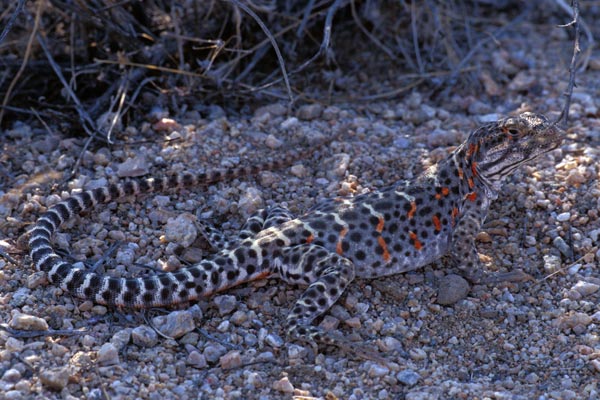
Eleven months later, we tried again to find desert tortoises at the Desert Tortoise Natural Area, but we were foiled once more. Apparently 1999 was a low-tortoise-activity year since the previous winter and spring had been abnormally dry. Still, we saw lots of other interesting animals, including this gravid female leopard lizard showing her breeding season colors. She was hanging out in the shade of a small bush, awaiting passing edibles.
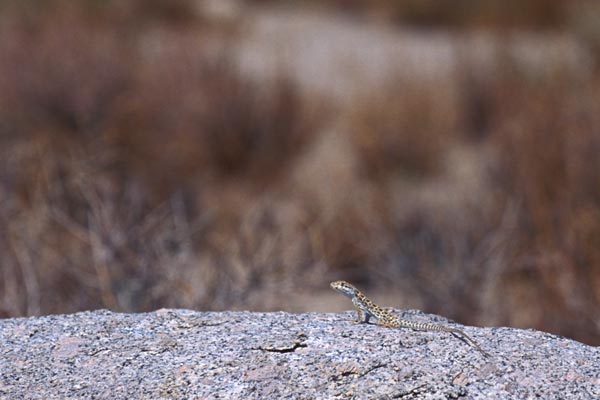
This was a good trip for young leopard lizards; I saw five in three days. They're pretty wary, so you generally have to recognize them either as they run away, or from a long way off, or both. I spotted this one from about 100 feet away while driving past on a bumpy road. Though several species of lizards hang out on the rocks strewn across the desert floor here, the glimpse of silhouette was enough for me to distinguish a leopard lizard from the much more common side-blotched lizards, fence lizards, and desert spiny lizards that also inhabit the local rock-tops.
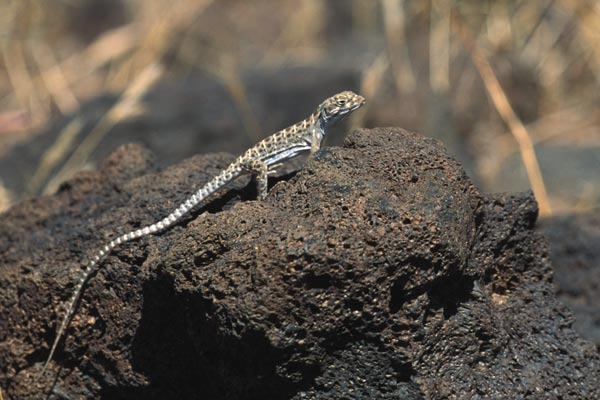
When I first saw this leopard lizard from a distance, I was sure it was a collared lizard instead. Collared lizards are typically found perched on boulders like this, but leopard lizards are typically found on the ground. And indeed, a collared lizard was perched on a boulder less than fifty feet away. Maybe the leopard lizard was orphaned at birth and adopted by a friendly tribe of collared lizards, so it grew up to learn their ways? Naaaaaah.
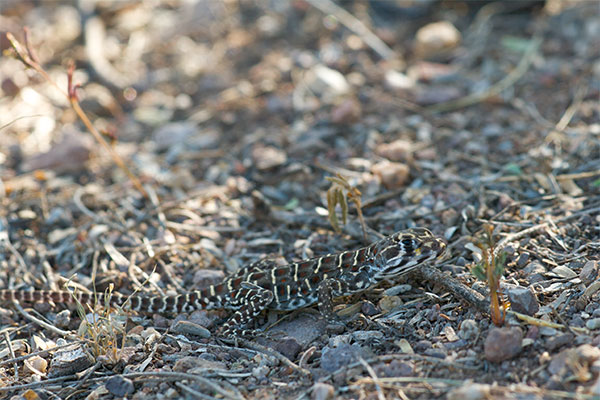
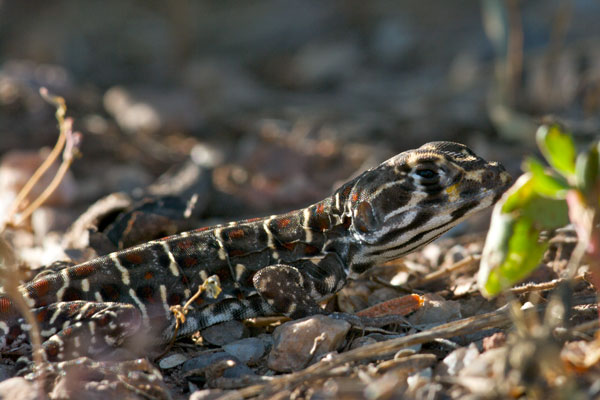
This was by far the smallest Leopard Lizard that I've yet seen. It was about the size of a Side-blotched Lizard. I spotted it moving, and didn't recognize it until it stopped. I turned my head to shout "Baby Leopard Lizard!" at my herping compatriots, and when I turned my head back it had moved and I could no longer see it. Its camouflage was so good that it took me about 30 seconds to relocate it in its new position, no more than six inches from where I had first seen it.
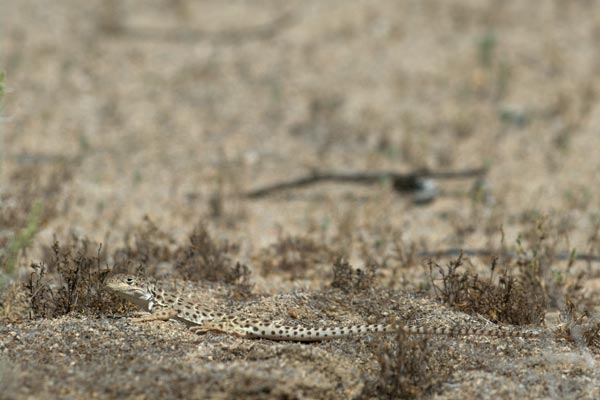
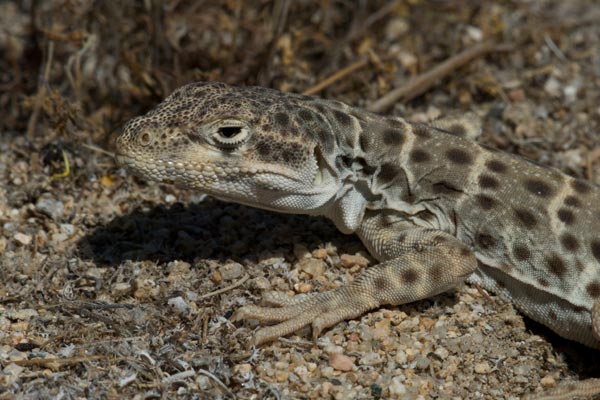
While heading back home to coastal California from Texas and points further east, we left the interstate in order to stop by Kelso Dunes. We didn't have time for more than a quick visit to stretch our legs and those of our dogs. I was keeping my eyes open for Mohave Fringe-toed Lizards, but apparently they were a little too focused on that goal, because I walked past this fine lizard without noticing it. One or more of our several dogs did notice it though, which caused my wife to notice them noticing it. I was summoned, and came back for a few photos. The lizard was remarkably cooperative, eyeing me suspiciously but holding its ground as I got closer and closer.
I did end up seeing three or four fringe-toed lizards, most of which the dogs noticed before I did. They were not as cooperative, and though I got some good looks, I ended up with no photos of that species.
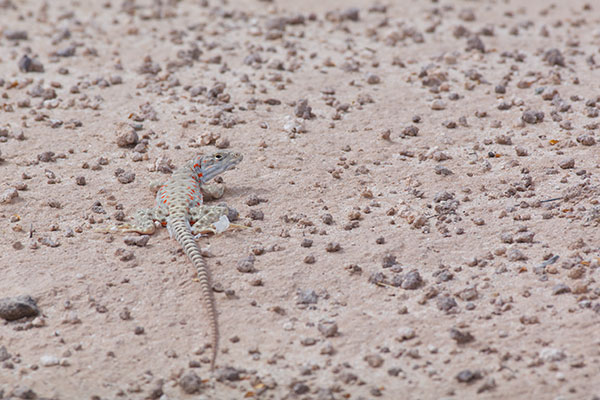
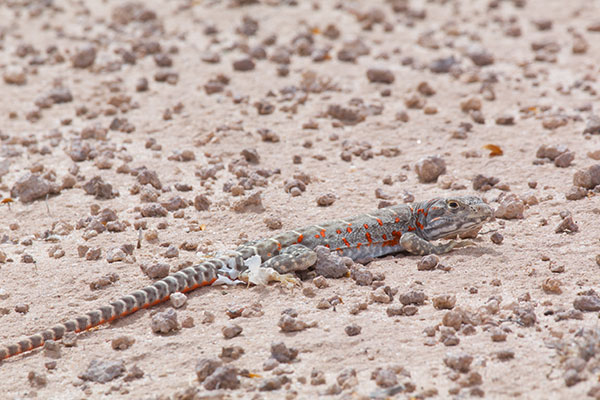
While out looking for fringe-toed lizards and horned lizards, I also came across two of these most excellent lizards. The first one I only barely recognized by size and shape as it sped away from me like a rocket. The second one, pictured here, was about ten feet off of the dirt road that I was slowly driving along. I stopped the car and took the first picture through the open window in case it too would vanish before I got any closer. But it held its ground as I oh-so-slowly snuck out the far side of the car, then moved around the car, then started creeping up slowly on its position, periodically stopping to get a photo or two. This is as close as she (the orange spots identify it as a female in breeding season) let me get.
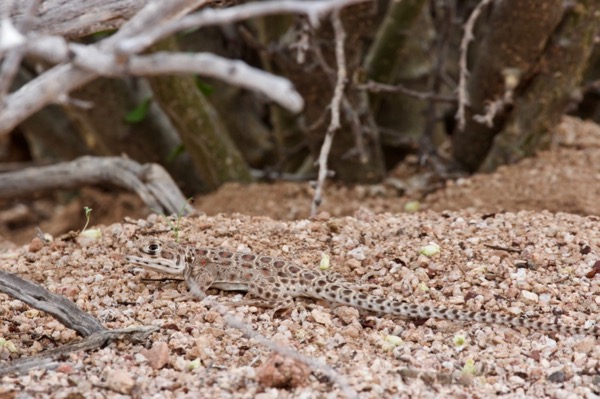
While a group of us were admiring a Regal Horned Lizard that we had just found on the road, someone (maybe Bryan Hughes?) spotted this pretty young leopard lizard naerby.
Printed references:
- Behler, J. L., King, F. W. 1979. The Audubon Society Field Guide to North American Reptiles & Amphibians
- Conant, R., Collins, J. T. 1998. Peterson Field Guide to Reptiles and Amphibians of Eastern and Central North America, Third Edition, expanded
- Crother, B. I. (ed.) 2017. Scientific and Standard English Names of Amphibians and Reptiles of North America North of Mexico, with Comments Regarding Confidence in Our Understanding, Eighth Edition
- Degenhardt, W. G., Painter, C. W., Price, A. H. 1996. Amphibians & Reptiles of New Mexico
- Hanson, J., Hanson, R. B. 1997. 50 Common Reptiles & Amphibians of the Southwest
- Miller, A. H., Stebbins, R. C. 1973. The Lives of Desert Animals in Joshua Tree National Monument
- Monday, D.C., Dobolek, R. 1999. Arizona Wildlife Views, Special Edition
- Rogner, M. 1997. Lizards
- Sanborn, S. R. 1994. The Lizard-Watching Guide
- Schoenherr, A. A. 1992. A Natural History of California
- Smith, H. M. 1995. Handbook of Lizards: Lizards of the United States and Canada
- Smith, H. M., Brodie, E. D. Jr. 1982. Reptiles of North America: A Guide to Field Identification
- Stebbins, R. C. 2003. Peterson Field Guide to Western Reptiles and Amphibians, Third Edition
- Stoops, E. D., Wright, A. 1997. Snakes and other Reptiles of the Southwest, 4th Edition
- Wauer, R. H. 1964. Reptiles and Amphibians of Zion National Park